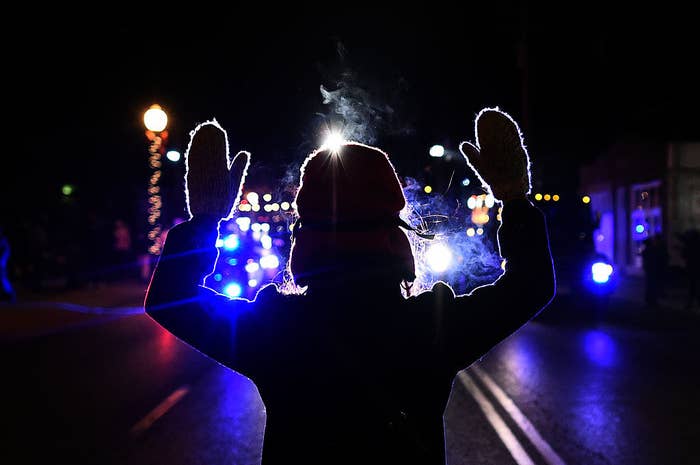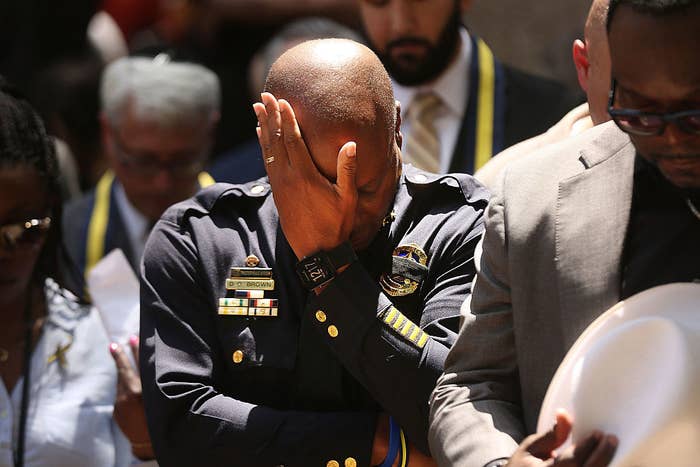
Coming right after police killed Alton Sterling and Philando Castile, and after the attack in Dallas that left five police officers dead, the New York Times headline was surely going to provoke a storm: “Surprising New Evidence Shows Bias in Police Use of Force but Not in Shootings.”
That article described a new study from Roland Fryer, the youngest black economist to gain tenure at Harvard, and was seized upon by commentators who challenge the premise of the Black Lives Matter movement. One Wall Street Journal op-ed railed against “corrosive rhetoric about racist cops, based on falsehoods.”
But the data driving such easy opinions is actually pretty complicated. Fryer’s study is one of two new major reports on racial bias in policing, both of which find that black suspects are more likely to be tackled with nonlethal force than white suspects. But when it comes to police shootings, especially of unarmed suspects, there are no simple answers. All of the studies run so far are too small or too narrowly focused to paint a definitive picture.
Fryer’s findings on police shootings came as a surprise because data compiled by the Washington Post shows that black suspects are about twice as likely to die from police gunfire as you’d expect, given the makeup of the U.S. population.
But this disparity doesn’t necessarily mean that cops are more likely to pull the trigger when faced with a black suspect. If black Americans have more interactions with the police, either because they tend to live in areas that are policed more heavily or commit more crimes, then that might explain the difference — even without any bias in cops’ decisions to shoot.
So the other new study considered the police’s use of force in relation to arrest rates for different races.
This study, from the Center for Policing Equity, was led by another leading black scholar, Phillip Atiba Goff of the John Jay College of Criminal Justice in New York. Goff’s team obtained data on incidents where cops used force from 12 police departments across the U.S. For the most recent year of data, the researchers found 46 use-of-force incidents per 1,000 arrests for black suspects, compared to 36 per 1,000 arrests for white suspects.
Overall, the researchers looked at more than 19,000 incidents. About one-quarter involved only a threat to use force, such as an officer pulling a gun without shooting; and 37% involved physical contact between cops and suspects, without any weapon being used. (The rest included incidents using pepper spray, tasers, batons, and so on.)
Just 1% involved lethal force — almost always gunfire — and the study found no difference by race for these incidents, after accounting for arrest rates. Unlike Fryer, however, Goff’s team didn’t stress this aspect of their findings.
“They’re small numbers,” Jack Glaser of the University of California, Berkeley, one of the study’s authors, told BuzzFeed News. “We have less confidence in them.” Glaser is also concerned that police reports on lethal force may be incomplete — for example, classifying some fatal shootings as accidental deaths.

Fryer’s team pushed harder to investigate racial bias in police shootings.
They analyzed New York City’s “Stop and Frisk,” the infamous program in which cops can challenge people on the street and search them for weapons or other contraband; and the Police-Public Contact Survey, which samples a nationally representative group of people who have interacted with the police. Fryer also obtained data on incidents where an officer fired a gun from police departments in three Texas cities, six Florida counties, and Los Angeles County in California.
Fryer found that black and Latino suspects were more than 50% more likely than white suspects to experience some form of force in their interactions with police. The bias remained even after the researchers accounted for whether the suspect provided an ID, and the crime rate in the area where the encounter happened.
But Fryer saw no racial difference in whom police shot. The most surprising result came from the city of Houston, where in addition to officer-involved shootings he analyzed police reports of incidents in which lethal force might have been justified, but wasn’t used. These included cases where suspects assaulted police officers or resisted arrest. Although the results weren’t statistically significant, the Houston data suggested that cops were actually more likely to shoot at white suspects than black ones.
The Houston data has several caveats beyond coming from just one city that may not be typical — notably that it relies on police officers’ interpretation of events.
On Tuesday, in the wake of the New York Times story, Fryer was declining media requests for interviews. But his paper is cautious about interpreting findings from a small number of police departments that were willing to turn over their data.
“It is possible that these departments only supplied the data because they are either enlightened or were not concerned about what the analysis would reveal,” Fryer wrote. “In essence, this is equivalent to analyzing labor market discrimination on a set of firms willing to supply a researcher with their Human Resources data!”
Other research paints a very different picture.
In a study accepted for publication in Criminology & Public Policy, researchers led by Justin Nix of the University of Louisville in Kentucky analyzed the 990 fatal police shootings recorded by the Washington Post in 2015. Of those shootings, 93 involved suspects who were unarmed. The researchers accounted for influencing factors including local crime rates and the mental health of the suspect. But even after making these corrections, they found that unarmed people of color were twice as likely to be fatally shot by police.
While the Washington Post’s data is national, it also has holes. First, cops who shoot at suspects kill them only about one-third of the time. So any data on police shootings that considers only fatal incidents is missing two-thirds of the picture. Fryer’s and Goff’s studies, by contrast, included nonfatal shootings. And the Post’s data can say nothing about incidents like those Fryer investigated in Houston, in which cops might have been justified in opening fire, but didn’t do so.
What’s needed, say experts, is a nationally representative study that looks at all incidents in which cops fire on members of the public, or are in a situation where lethal force might be justified.
The trouble is, that data could take years to compile.
“We are still missing a big piece of the pie,” Nix said.
